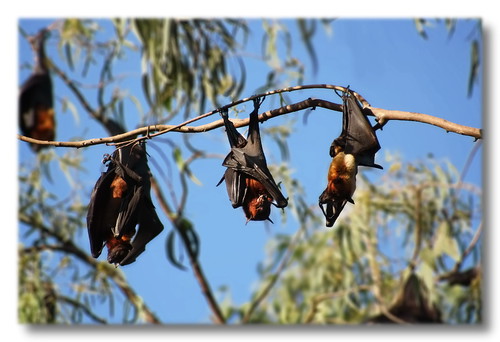第一份全球性的授粉物種生存趨勢評估研究指出,不只是蜜蜂正在減少,授粉鳥類和哺乳類也面臨滅絕危機;而且,瀕臨絕種的物種,多過於數量增加的授粉鳥類和哺乳類。
「全球價值2150億美元的授粉活動出現危機。」研究主要作者、世界保育監控中心學者Eugenie Regan表示,研究結果非常值得警惕。
授粉動物往「滅絕」晉級 每年達2.4種
約90%的開花植物透過動物和鳥類授粉,而許多開花植物更是人類的糧食、牧草、藥物和材料。
已知鳥類和哺乳類中,有9%是授粉物種。尤其是哺乳類中的蝙蝠,授粉多種經濟上和生態上都相當重要的植物,包括龍舌蘭和仙人掌;主要的授粉鳥類包含蜂鳥、吸蜜鳥、太陽鳥和繡眼鳥等。
研究顯示,近幾十年,平均每年有2.4種授粉鳥類和哺乳類物種,保護級別往滅絕靠近一級。編製瀕危物種紅色名錄的世界自然保育聯盟(IUCN)指出,這些物種的滅絕危機大幅增加。
非永續農法 破壞棲地是主因
非永續農業導致棲地破壞,是許多授粉鳥類和哺乳類減少的主因。此外,人類獵捕大果蝠等授粉哺乳類當做糧食;同時,授粉鳥類受外來種入侵威脅。
研究作者使用紅色名錄指數,判斷全球授粉鳥類和哺乳類的生存趨勢。紅色名錄指數是一完整的評估方法,使用IUCN的資料,以物種保護等級的升高與降低為基礎,可顯示一系列動物各時間點的生存機率。
作者建議,應將此研究方法納入蜜蜂、黃蜂和蝴蝶等授粉昆蟲。
18種鳥類 13種哺乳類 保護等級只升不降
1988至2012年間,共有18種授粉鳥類保護等級往滅絕邁進。其中之一的王吸蜜鳥(Anthochaera phrygia),因為長期農業開發和與其他物種競爭數量銳減,保護等級從瀕危「升級」至極度瀕危。
在這25年當中,沒有任何授粉鳥類的保護等級降低。
1996至2008年,13種授粉哺乳類保護等級提高,只有2種物種保護等級降低。例如哥倫比亞白線蝠(Platyrrhinus chocoensis),因棲地變成種植可可的農地,從易危升級成瀕危;不會飛的授粉哺乳類蜂猴,因獵捕用於寵物貿易和棲地流失,從近危升級成易危。
好消息是,因社區保育計畫提供安全棲息場所,奔巴狐蝠(Pteropus voeltzkowi)從極度瀕危降級至易危。
It’s not just bees, the world is losing its pollinating birds and mammals, new research shows. More pollinating bird and mammal species are moving towards extinction than away from it, finds the first global assessment of trends in pollinators.
About 90 percent of flowering plants are pollinated by animals and birds, and humans rely on many of these plant species for food, livestock forage, medicine and materials.
Nine percent of all known bird and mammal species are pollinators. Among mammals, bats perform this work, pollinating a large number of economically and ecologically important plants such as agave and cacti.
Key pollinating birds include hummingbirds, honeyeaters, sunbirds and white-eyes.
Lead author Eugenie Regan of the World Conservation Monitoring Centre said the research results are alarming. “It shows a worrying trend that may be impacting negatively on global pollination services, estimated to be worth more than US$215 billion.”
The assessment shows that on average, 2.4 bird and mammal pollinator species a year have moved one category towards extinction in recent decades, a “substantial increase in extinction risk” across this set of species, the IUCN said in a statement releasing the study today.
Habitat loss from unsustainable agriculture was found to be the main cause of decline for many species among both mammals and birds.
Pollinating mammals, such as the large-bodied fruit bats, are hunted for bushmeat, while birds are affected by invasive alien species.
During the period 1988 to 2012, 18 pollinator bird species qualified for being ‘up-listed’ to a higher threat category.
For example, the Regent Honeyeater, Xanthomyza phrygia, was up-listed from Endangered to Critically Endangered due to rapid population decline driven by drought, habitat loss caused by historic clearance for agriculture, and possibly competition with other species.
No pollinating bird species qualified for ‘down-listing’ to lower categories of threat.
Between 1996 and 2008, 13 mammal species identified as pollinators were up-listed to a higher threat category and two species qualified for down-listing to a lower category of threat.
For example, the Choco Broad-nosed Bat, Platyrrhinus chocoensis, moved from Vulnerable to Endangered due to habitat conversion to agriculture for cocoa, while among non-flying mammals the Sunda Slow Loris, Nycticebus coucang, moved from Near Threatened to Vulnerable due to harvesting for the pet trade and habitat loss.
On the other hand, the Pemba Flying Fox, Pteropus voeltzkowi, was down-listed from Critically Endangered to Vulnerable thanks to community conservation programs which provide protection at specific roost sites.
To determine the trend in the global status of pollinating birds and mammals, the authors used the Red List Index, an established method that shows trends in survival probability over time for sets of species using data from the IUCN Red List.
The Index is based on the proportion of species that move through the IUCN Red List categories over time, either away from or towards extinction.
The authors advise that this approach now needs to be expanded to include bees, wasps and butterflies.
※ 全文及圖片詳見:ENS










